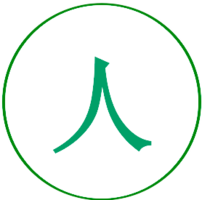What is 'Netto' Gyokuro?
Mountain Dew Gyokuro Tea
The various types of Japanese green tea include a divergent range, such as Gyokuro, Kabusecha, Sencha, Hojicha, etc.
Primarily, these green teas are non-fermented, which is achieved by halting the fermentation process immediately after the leaves are picked.
Most all Japanese green teas, including Sencha, Gyokuro, Kabusecha, and even roasted Hojicha, are non-fermented.
Looking at two particular styles of tea here, we have a shaded green tea, otherwise known as "Kabusecha", which certainly includes Gyokuro tea, and Sencha.
A fundamental difference lies in the "cultivation method" of the tea leaves. Sencha is cultivated in full sunlight starting from the emergence of new buds until harvest.
On the other hand, shaded tea, Kabusecha, is cultivated by shading the tea plants once the new buds begin to appear for about one to two weeks prior to the actual tea harvest.
Gyokuro follows a cultivation method with more comprehensive shading. Typically, Gyokuro is shaded for approximately 2-3 weeks prior to harvest with a shading rate of up to 90%.
Kabusecha, like the Mountain Dew 'netto' Gyokuro we have on offer, has a shading rate of around 50%. It involves directly covering the tea leaves with a special cloth-like material developed for this purpose.
Cultivating tea leaves with or without shading is one of the primary difference between "Kabusecha" and "Sencha."
Tea Leaf Colour
Shading cultivation increases the amount of chlorophyll in tea leaves, resulting in a deep green color, and the tea's infusion takes on a vibrant fresh green hue.
Some people when trying Ujicha for the first time may wonder if the tea is deep-steamed tea. This is because of Ujicha’s vibrant green colour, a result of shaded cultivation, and the rich umami depth of flavour.
I urge you to explore the richness of our shaded Ujicha.
Mellowness @Higher Temp

'Mountain Dew' Gyokuro
'Mountain Dew' Gyokuro
Delicate Aroma & Mellowness @Extreme Temp
AU$32.00
Delicate Sweet Flavour

'Glistening Dew' Gyokuro
'Glistening Dew' Gyokuro
Umami Richness & Long Palate Sweetness
AU$35.00
Alluring Silky Mouthfeel

'Crown' Gyokuro
'Crown' Gyokuro
Rich & Smooth With Alluring Silky Mouthfeel
5.0
(1)
AU$37.00
Display prices in:AUD

